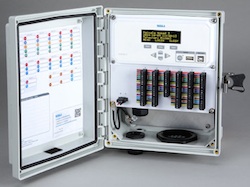Hawaii is the first state in the U.S. to pass legislation that will require 100 percent of all energy to sourced from renewable energy by 2045. Lawmakers voted 74-2 in favor of House Bill 623 requiring all electricity to be generated from clean sources such as wind, solar, and geothermal.
 The measure, if enacted by Governor David Ige, would make Hawaii the first state in the nation with such a 100 percent renewable energy standard. Blue Planet Foundation, whose mission is to clear the path for 100% renewable energy, praised the move.
The measure, if enacted by Governor David Ige, would make Hawaii the first state in the nation with such a 100 percent renewable energy standard. Blue Planet Foundation, whose mission is to clear the path for 100% renewable energy, praised the move.
“As the first state to move toward 100% renewable energy, Hawaii is raising the bar for the rest of the country,” said Rep. Chris Lee, the Chairman of the House Energy and Environmental Protection Committee and introducer of HB 623. “Local renewable projects are already cheaper than liquid natural gas and oil, and our progress toward meeting our renewable energy standards has already saved local residents hundreds of millions on their electric bills. Moving to 100% renewable energy will do more to reduce energy prices for local residents in the long term than almost anything else we could do.”
Senator Gabbard, Chair of the Senate Energy and Environment Committee and a champion of the measure in the Senate, shares the sentiment. “With this bill, we’ll now be the most populated set of islands in the world with an independent grid to establish a 100% renewable electricity goal,” said Sen. Gabbard. “Through this process of transformation Hawaii can be the model that other states and even nations follow. And we’ll achieve the biggest energy turnaround in the country, going from 90% dependence on fossil fuels to 100% clean energy.”
House Bill 623 also increases the interim requirement to 30 percent renewable by 2020. Last year, Hawaii generated about 22 percent of its electricity from renewable resources.Read More









